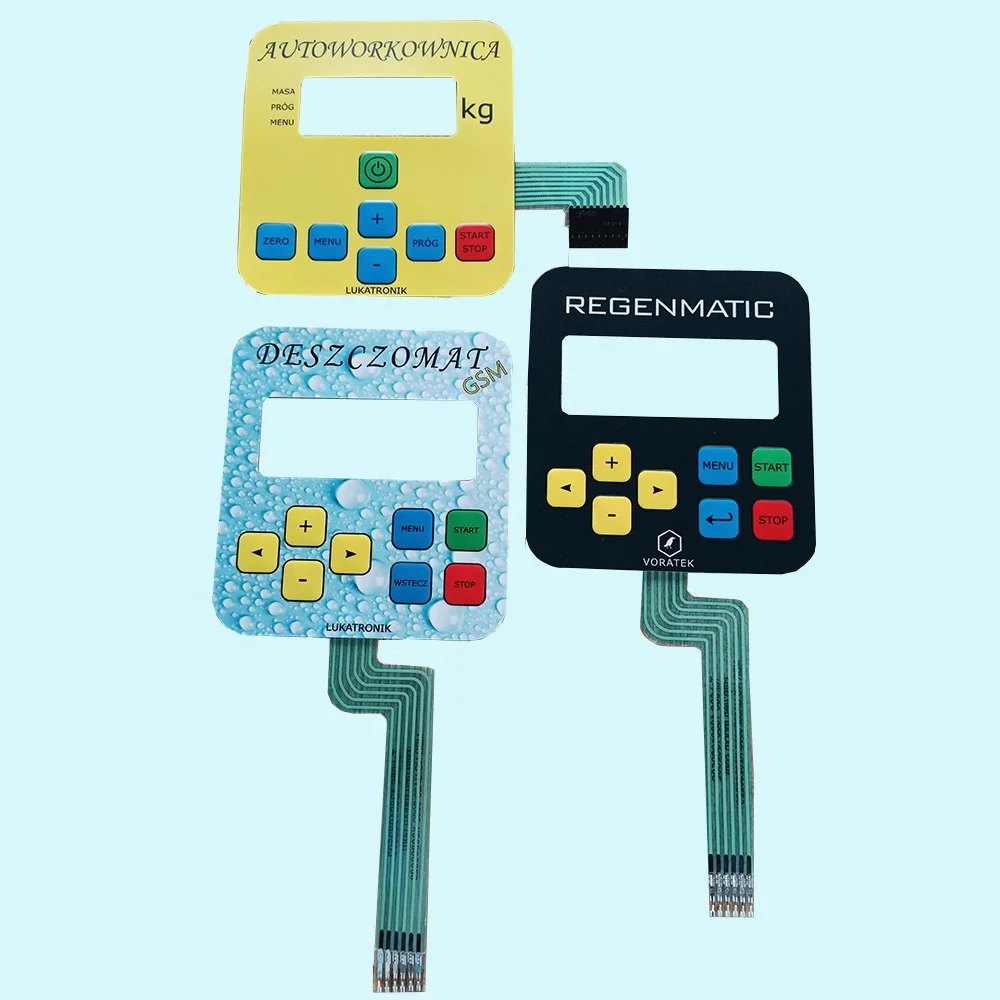Top Features to Look for in a High-Quality Membrane Switch
Top Features to Look for in a High-Quality Membrane Switch
Blog Article
Recognizing Membrane Layer Switches Over: The Secret to Durable and Trustworthy Controls

What Are Membrane Layer Buttons?
Membrane layer switches are an advanced solution in the world of individual interface modern technology, incorporating capability and layout flawlessly. These tools function as an interface between users and electronic systems, incorporating numerous elements into a portable style. Normally built from versatile, slim layers of products, membrane buttons are developed to react to touch, allowing users to connect with machinery and electronic tools efficiently.
The primary aspects of a membrane layer switch include a published circuit layer, graphic overlay, and a spacer layer that avoids unplanned activation. The graphic overlay can be customized to reflect brand name identification or customer choices, boosting aesthetics while ensuring usability. Membrane switches are commonly utilized in numerous applications, including clinical gadgets, consumer electronic devices, and industrial tools, owing to their longevity and resistance to environmental aspects such as wetness and dirt.
One of the essential benefits of membrane switches is their ability to endure deterioration, making them suitable for high-traffic environments. In addition, they are light-weight and call for marginal room, enabling ingenious designs in product development. Overall, membrane layer switches stand for a useful and reliable selection for modern-day digital user interfaces, weding modern technology with user-centric design principles.
Exactly How Membrane Layer Switches Work
The operation of membrane layer switches over joints on a basic yet efficient system that converts individual input into digital signals. When a user presses the switch, the leading layer flaws, allowing a conductive aspect in the circuit layer to make contact with a matching conductive pad on the bottom of the visuals overlay.
The style of membrane layer switches can vary, yet they typically include domes or tactile components to offer responses to the user, improving the overall experience - membrane switch. The products made use of in membrane switches, such as polyester or polycarbonate, add to their resilience and resistance to ecological aspects, including moisture and dirt. The printed circuits are normally enveloped, which secures them from wear and tear over time.
Benefits of Membrane Layer Switches

Additionally, membrane layer switches are known for their resilience. Constructed from robust materials, they are immune to dust, wetness, and physical wear, which considerably extends their lifespan compared to conventional mechanical buttons. This durability makes them specifically ideal for high-traffic settings and applications calling for durability.
Another substantial advantage is the ease of cleaning and upkeep. The smooth surface area of membrane switches over minimizes dust accumulation and is typically resistant to spills, making them optimal for settings that call for frequent sanitization.
Furthermore, membrane buttons provide a streamlined account, leading to a thinner style that can be integrated into various tools without including mass. This attribute not just enhances the visual allure but likewise contributes to a much more ergonomic product style.
Applications of Membrane Layer Switches
Flexible and straightforward, membrane layer switches discover applications throughout a vast array of markets, consisting of clinical tools, consumer electronic devices, and industrial additional info tools. In the clinical area, these switches are important to devices such as analysis equipment, patient surveillance systems, and infusion pumps, where dependability and convenience of cleansing are crucial. Their capability to hold up against harsh environments and maintain performance makes them suitable for such applications.

In consumer electronic devices, membrane layer switches are used in items like microwaves, cleaning equipments, and remote controls - membrane switch. Their streamlined layout allows for user-friendly individual interfaces, boosting the total user experience while providing sturdiness and resistance to deterioration
Industrial devices likewise takes advantage of membrane buttons, especially in control panels for equipment and automation systems. These switches offer defense against dirt and moisture, making sure consistent performance in tough environments. Their adjustable features permit suppliers to tailor them to certain functional demands, boosting efficiency and functionality.
Selecting the Right Membrane Switch Over
When choosing a membrane switch, it is necessary to take into consideration various factors that influence efficiency and viability for certain applications. The key factors to consider include environmental conditions, tactile comments, sturdiness, and layout specs.
First, examine the operating setting; switches subjected to dampness, chemicals, or extreme temperatures require certain products to ensure long life and capability. Next, examine the need for responsive responses. Relying on customer communication, some applications may gain from a tactile reaction to verify activation, while others may like a non-tactile style for aesthetic reasons.
Sturdiness is one more essential factor; membrane layer switches ought to be developed to hold up against frequent use, impacts, and abrasion. Guarantee the picked switch can withstand the expected lifecycle, particularly in high-usage scenarios.

Conclusion
In conclusion, membrane layer changes act as vital parts in the layout of sturdy and reputable control systems across numerous markets. Their portable design, combined with durable construction and customizable features, enhances user interaction while guaranteeing durability sought after settings. The convenience of membrane switches enables tailored options that meet specific operational requirements, reinforcing their importance in modern innovation. As industries remain to develop, the significance of incorporating efficient membrane button options can not be overstated.
Membrane layer changes represent a critical continue reading this element of contemporary interface style, mixing performance with durability in various applications.Membrane switches are an innovative service in the world of customer interface innovation, incorporating performance and layout flawlessly. Normally constructed from adaptable, thin layers of materials, membrane layer buttons are designed to react to touch, making it possible for individuals to communicate with machinery and electronic gadgets efficiently.
The layout of membrane layer switches can vary, but they often integrate domes or tactile components to offer responses to the user, enhancing the overall experience.In verdict, membrane layer switches offer as vital elements in the visit this site right here layout of trusted and long lasting control systems throughout various sectors.
Report this page